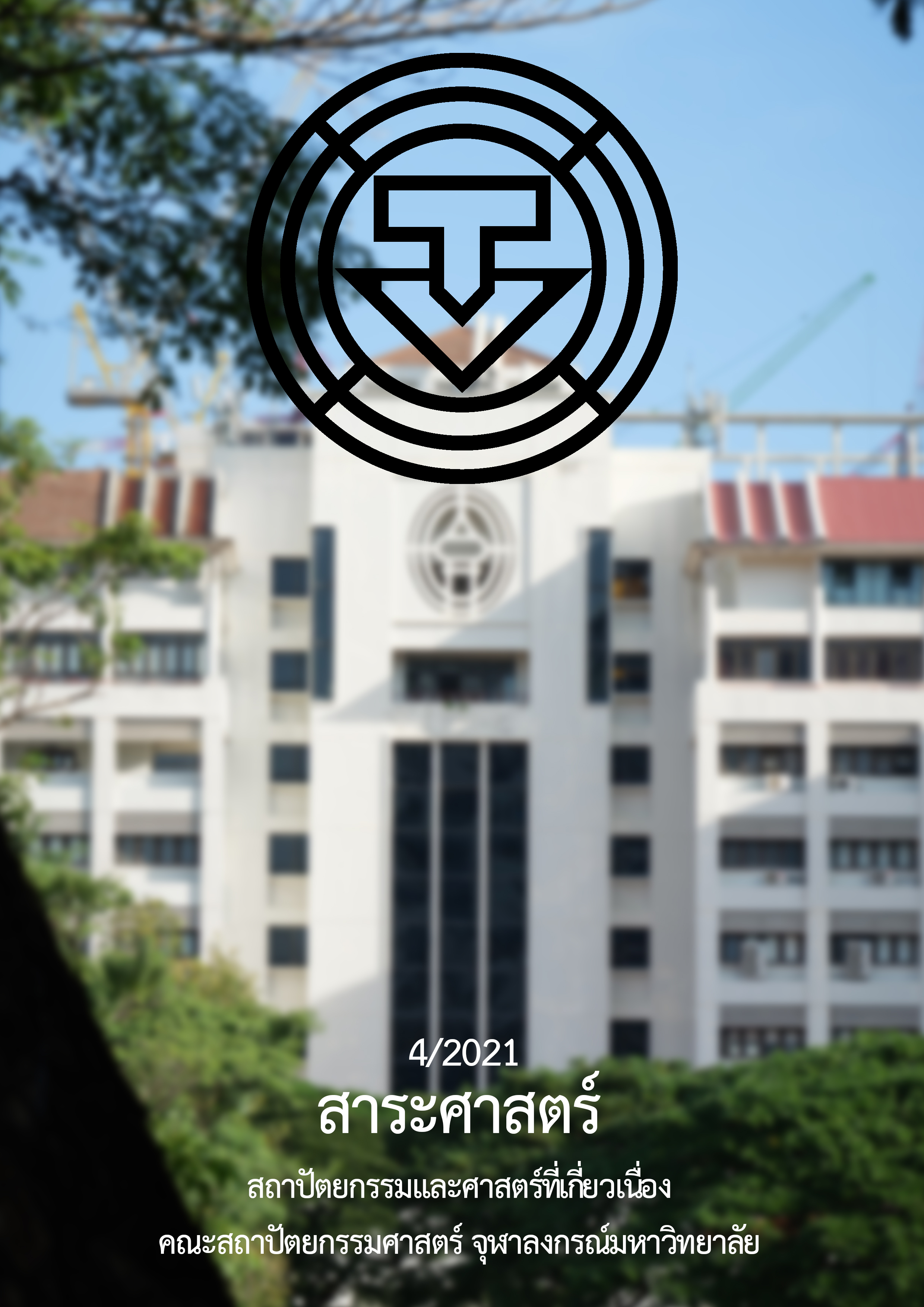Effects of Humidity in En-Suite Bathroom Residences to the Electricity Bill from Air Conditioner
Main Article Content
Abstract
Energy Policy and Planning Office, Ministry of Energy, has showed the increased trend of electricity usage. Thailand’s high temperature and continuous expansion of the urban areas lead to the significant growth of electrical usage from air conditioners each year. The household economics and social surveys from 2007 – 2015 showed that the apartment and dormitory businesses have installed a great deal of air conditioners. Average electricity bill of residences with air conditioners installed are 3.5 times more than residences without air conditioners installed. The Dormitory Business Registration Data from Ministry of Social Development and Human Security in Bangkok showed that there were as many as 24,754 dormitories with air conditioners installed in 2018.
Air Conditioners were designed based on Comfort Air Conditioning with as small energy usage as possible for optimum temperature, humidity, wind speed, and energy usage. This research aims to study the air conditioner’s Cooling Load which consists of Latent Heat and Sensible Heat. Apartment and Dormitory’s main source of humidity is the bathroom. As the bathroom is the main function of en-suite bathroom residence, occupying 15-30% of total room area, the bathroom usage (washing hands, showering, cleaning, etc.) will also transfer the humidity to the air-conditioned main area. This research collects temperature and humidity to calculate electricity bill by Psychometric Chart Method. The Psychometric Chart is used to obtain total energy which then converted to Latent Heat and Sensible Heat to calculate electrical usage and electrical bills from the air conditioner. The results are used as guideline for expense reduction for residents and electrical energy usage reduction for the country. The research shows that prevention of humidity from the bathroom could save electricity bill as much as 12%.
Article Details
References
กระทรวงพลังงาน (พพ). กรมพัฒนาพลังงานทดแทนและอนุรักษณ์พลังงาน. (2060). คู่มือฝึกอบรมการประเมินศักยภาพการอนุรักษ์พลังงาน. สืบค้นเมื่อ 25 กรกฎาคม 2564, จาก http://energyauditorthai.com/wp-content/ uploads/2017/01/06-บทที่-5.-เครื่องปรับอากาศแบบแยกส่วน.pdf
ชาตรี เกียรติจรูญศิริ. (2553). การลดภาระการทำความเย็นของระบบปรับอากาศโดยใช้สารดูดความชื้นเพื่อการประหยัดพลังงาน, วารสารวิจัยพลังงาน, 7(1), 26.
ธนพล คำล้ำเลิศ. (2562). ปัจจัยที่มีผลต่อการตัดสินใจเช่าห้องพักที่ตำบลอ้อมน้อย อำเภอกระทุ่มแบน จังหวัดสมุทรสาคร.(วิทยานิพนธ์ปริญญามหาบัณฑิต, มหาวิทยาลัยสยาม).
พัลลภ กฤตยานวัช และ เริงจัย คลายบสูตร. (2555). แนวทางการลงทุนและบริหารกิจการอพาร์ทเม้นท์สำหรับผู้มีรายได้น้อยและปานกลาง. ใน กลยุทธ์การตลาดสินเชื่อที่อยู่อาศัยปี 2555. (น.26-32). กรุงเทพฯ: ธนาคารอาคารสงเคราะห์.
วิศวกรรมสถานแห่งประเทศไทย ในพระบรมราชูปถัมภ์. (2561). มาตรฐานระบบปรับอากาศและระบายอากาศ (ฉบับปรับปรุงครั้งที่ 3 พิมพ์ครั้งที่ 2). กรุงเทพฯ: วิศวกรรมสถานแห่งประเทศไทย ในพระบรมราชูปถัมภ์.
สำนักการวางผังและพัฒนาเมืองกรุงเทพมหานคร. กองนโยบายและแผนงาน. (2561). หอพักในเขตกรุงเทพมหานคร. สืบค้นเมื่อ 7 สิงหาคม 2564, จาก http://www.bangkok.go.th/upload/user/00000354/plan/report/02.pdf
สำนักการวางผังและพัฒนาเมือง กรุงเทพมหานคร. กองนโยบายและแผน. กลุ่มงานวิจัยผังเมือง 2. (2562). หอพักในเขตกรุงเทพมหานคร ปี พ.ศ. 2561. กรุงเทพฯ: กองนโยบายและแผน สำนักการวางผังและพัฒนาเมือง กรุงเทพมหานคร.
สำนักงานนโยบายและแผนพลังงาน. (2564). รายงานสถิติพลังงานของประเทศไทย. สืบค้นเมื่อ 1 สิงหาคม 2564, จาก https://online.anyflip.com/qivjx/rqoo/mobile/index.html
สุนทร บุญญาธิการ. (2542). เทคนิคการออกแบบบานประหยัดพลังงานเพื่อคุณภาพชีวิตที่ดีกว่า. กรุงเทพฯ: สํานักพิมพ์ จุฬาลงกรณ์มหาวิทยาลัย.
สุรพล พฤกษพานิช. (2529). การปรับอากาศ: หลักการและระบบ. กรุงเทพฯ: ภาควิชาวิศวกรรมเครื่องกล คณะวิศวกรรมศาสตร์มหาวิทยาลัยเกษตรศาสตร์.
Akintunde, Aremu. (2015). Effects of temperature and humidity on coefficient of performance of air-conditioning system. Akure: Department of Mechanical Engineering, Federal University of Technology, Ondo State, Nigeria. Retrieved from https://www.researchgate.net/publication/327228073_Effects_ of_Temperature_and_Humidity_on_Coefficient_of_Performance_of_Air-conditioning_System
ASHRAE. (2020). ASHRAE STANDARD 55 – THERMAL ENVIRONMENTAL CONDITIONS FOR HUMAN OCCUPANCY (The 2020 edition of ANSI/ASHRAE Standard 55). Retrieved from www.ashrae.org
Moore, Fuller. (1993). Environmental control systems: Heating, cooling, lighting.Retrieved from https://www.buildingenclosureonline.com/blogs/14-the-be-blog/post/87659-the-psychrometric-chart-explained


